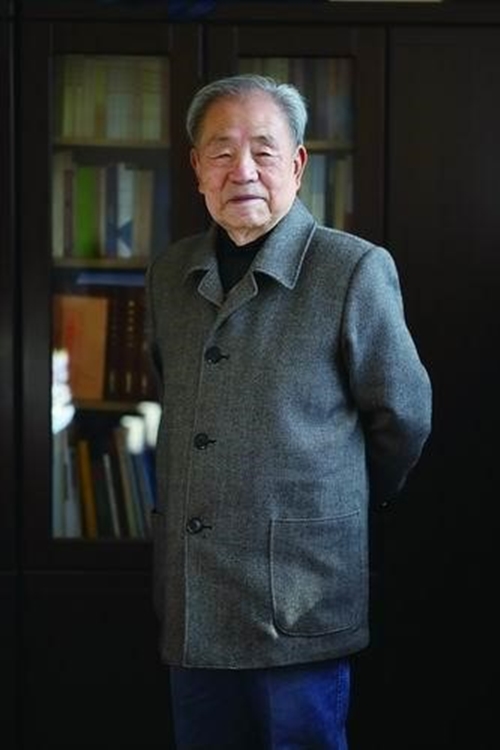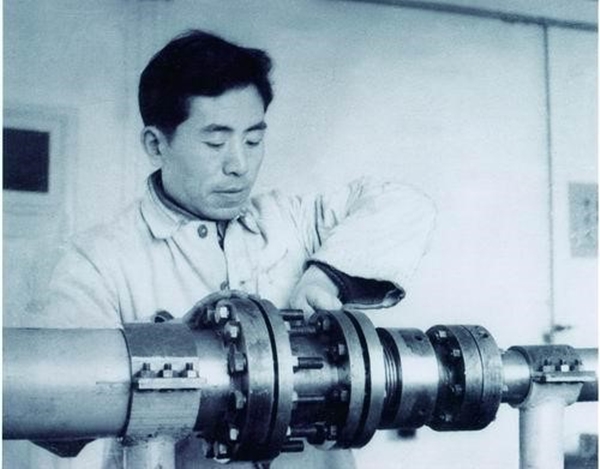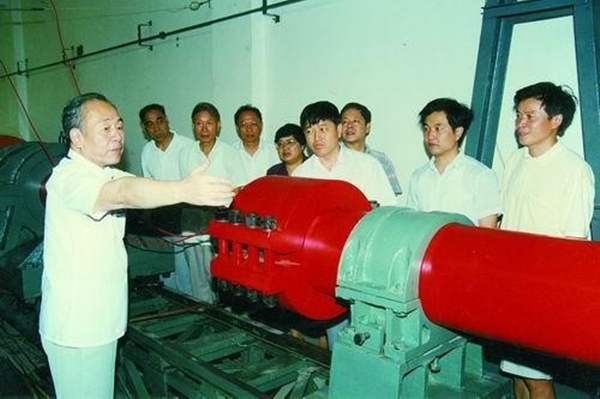For the sake of 0.1 seconds, the 'idle stone' stayed dormant for 50 years

"The evaluation of scientific research projects is like buying antiques- only those familiar with antiques can distinguish what is truly valuable. If we follow foreign researchers, no matter how small the gap is, we will always lag behind."
At the 2015 Chinese Congress of Theoretical and Applied Mechanics, Yu Hongru, 87, an academician of the Chinese Academy of Sciences and an aerodynamicist, received the first Qian Xuesen Mechanics Award. He was happy to receive this honor: "I was a student of Mr. Qian Xuesen and Mr. Guo Yonghuai, and winning this award strengthens my connection with them."
Yu considers himself an "idle stone" positioned by Guo years ago. In go games, masters often place a few idle stones that seem useless but have a significant impact on the future battle.
Yu, the "idle stone", seemed useless by routine evaluation standards but made a significant impact. In his early experiments, he experienced multiple explosions and "blew up" a new way accordingly.
'Idle stone'
In March 1957, when Yu reported to the Institute of Mechanics of the Chinese Academy of Sciences, Guo became his mentor, introducing him to the world of the "wind tunnel".
A wind tunnel, dubbed the "cradle" of aircraft, generates airflow through manual control to simulate the complex flight states of aircraft. Modern airplanes and missiles cannot fly before undergoing "tests" in a wind tunnel.
At that time, China was preparing to develop its aerospace industry, and a high-performance, large-size hypersonic wind tunnel was indispensable for designing space vehicles. Hence, in early 1958, the Institute of Mechanics established a shock tube team to independently research and develop shock tubes and shock wave wind tunnel technology. Guo laid down the "idle stone".
Wind tunnels involve high building costs and stringent technical requirements with large investments. At that time, China's economic and technological strength made it impossible to follow foreign technical routes. After careful consideration, Yu and his team decided to venture into the seemingly "dead end" — using oxy-hydrogen combustion (deflagration), which had been discarded abroad.
The primary reason for its obsolescence was its tendency to explode. Additionally, the driving air produced was of poor quality, making experiments difficult to reproduce. However, the method had clear advantages: it was cheap, easy to install, and required no high-tech equipment. Guo firmly supported Yu's work.
In the initial stage, Yu encountered experimental accidents, even blowing up the makeshift laboratory in the most severe instance. However, instead of being scolded, Yu was comforted and encouraged by his mentor. Later, the Institute of Mechanics purchased substantial amounts of cement and timber to rebuild the laboratory immediately after explosions. This deeply impressed Yu: "How could my mentor be so courageous to praise me after each laboratory explosion?"
Eventually, Yu identified the causes of the explosions and implemented preventive measures. The oxy-hydrogen combustion (deflagration) driving method he developed has been used for more than four decades without serious accidents. He acknowledged that although he took risks doing these experiments, his mentor Guo and other leaders took even greater risks: "Without their protection, I wouldn't have been able to continue the experiments."
Guo understood that such research would be a long-term endeavor with no short-term effects. Therefore, he never demanded regular progress reports from Yu. Yu recalled, "As long as we continued generating new results, Guo was satisfied regardless of experimental success or failure."
Starting in 1958, the Institute of Mechanics did not require Yu to submit plans or progress reports for over ten years. Reflecting on this period, Yu concluded: "Once the direction is defined, my efforts need only advance broadly. Micromanagement does not occur and interfere. A relaxed research environment is more important than funding support."

In 1960, Yu Hongru conducts an experiment. [Photo/mmcs.org.cn]
Gaming
At the beginning of 1964, when Guo first saw the JF-8, his usually kind face turned gloomy. Previously, Peking University had built a wind tunnel whose processing alone cost 800,000 yuan. The JF-8, with design dimensions and parameters in line with international standards, seemed like it would cost even more. When he learned that the processing of the JF-8 cost only 80,000 yuan, Guo's gloom faded. Surprised, he sighed, praising his students for their stringent budgeting.
In 1966, social turmoil swept over China, leaving the institute with no space for work or study. However, Yu did not abandon scientific research. In 1967, Yu and several peers worked tirelessly for more than two months to complete the JF-8 installation and begin trial operations. "When others are not working while you are, it is actually a favorable environment," Yu observed. In 1968, he went to the NORINCO Institute to borrow a special camera for experiments. Doubting that anyone was conducting experiments, the lender's leader visited the laboratory and, found Yu at work. The leader said, "You can use it freely." Thus, the $300,000 camera was lent to the shock tube task force for a long time, solving a major problem for the underfunded team.
During those years, the wind tunnel built by Yu's team was nearly unaffected by the social chaos. In 1969, after five years of effort, the JF-8 large-scale shock wave wind tunnel project was completed, with a nozzle outlet diameter of 800 millimeters. Its performance was comparable to international standards.
Since then, countless important aerospace projects have been tested in the JF-8. After experiments for developing returnable satellites in 1972, it supported test flights for the Dongfeng 5 satellite and other models. The completion of the wind tunnel was a reward for Yu's selfless hard work despite obstacles and persecution. It was his answer to the country's needs.
Reversion
Yu then proposed a bolder idea — using detonation to develop a higher-performance shock wave wind tunnel. No scientist in the world had proposed this before. However, due to its avant-garde nature, high risk, and the immature technical environment at the time, Yu's idea was not put into practice.
In 1988, during a visit to the Max Planck Society in Germany, Yu confirmed the feasibility of detonation technology at RWTH Aachen University's shock wave laboratory.
After returning to China, he immediately began research on the oxy-hydrogen combustion (deflagration) driver. He always kept his mentor Guo's words in mind: "One is truly capable when he can achieve great things without money."
In 1998, at the age of 70, Yu and his team built the world's first deflagration-driven shock wave wind tunnel, JF-10. He then set an even higher goal.

In September 1998, Yu Hongru (first from the left) explains the operating principle of the JF-10 deflagration-driven shock wave wind tunnel to representatives. [Photo/mmcs.org.cn]
At the time, the research community believed the test time of a shock wave wind tunnel was only a few milliseconds. With extreme efforts, Americans extended the test time to 30 milliseconds. Yu proposed building a shock wave wind tunnel that could reproduce hypersonic flight conditions with a test time of up to 100 milliseconds.
Only in this way could hypersonic flight conditions truly be replicated on the ground, overcoming a world-class problem that had persisted for nearly 60 years.
In May 2012, under Yu's guidance, the Institute of Mechanics established the JF-12 shock wave wind tunnel to replicate hypersonic flight conditions.
In video footage, slow motion shows the 265-meter-long, 100-ton JF-12 wind tunnel moved at the moment of ignition with a loud sound, capturing 0.1 seconds of activity data.
It was this 0.1 seconds that Yu had struggled for over half a century to achieve.
Finally, Guoi's "idle stone" positioned years ago played a key role in turning the tables in the global wind tunnel research competition.








